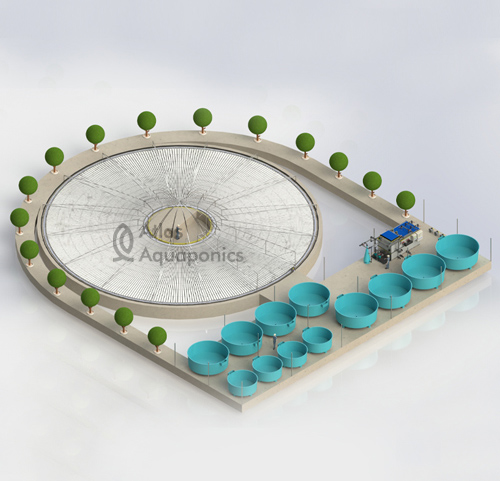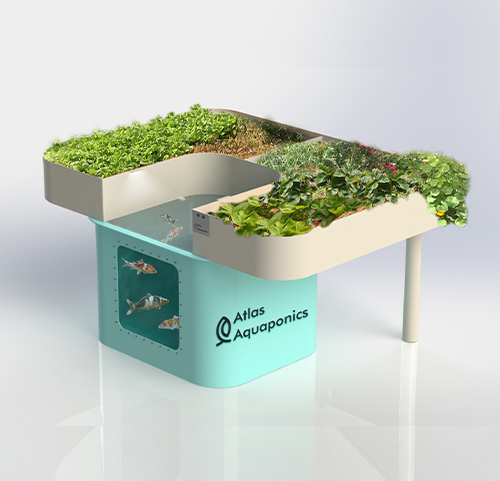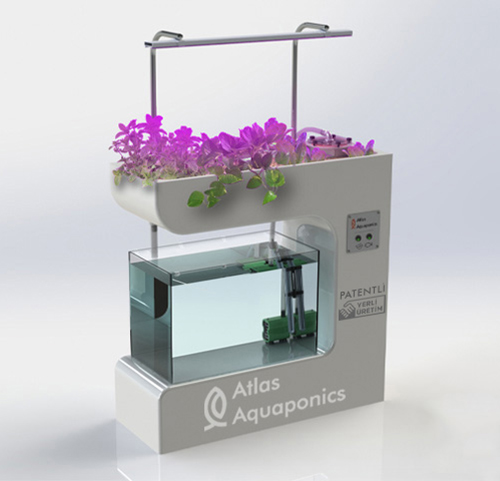Understanding Fish and Plant Compatibility in Aquaponics
How to Match Fish and Plants
Aquaponics is a delicate balance of fish and plants coexisting in a symbiotic system. The success of an aquaponic garden depends on selecting compatible fish and plants that thrive under similar environmental conditions. Understanding the relationship between these two crucial components ensures a healthy and productive system.

Key Factors in Fish and Plant Compatibility
To create a balanced aquaponic ecosystem, you need to consider several factors that affect both fish and plant health.
1. Water Temperature
Different fish species thrive at varying temperatures, and plants also have their preferred range. Ensuring that the chosen fish and plants can coexist within the same temperature range is essential.
- Warm-water fish (Tilapia, Catfish, Koi): Ideal for plants like basil, lettuce, and tomatoes.
- Cold-water fish (Trout, Perch): Best suited for leafy greens like spinach, kale, and cabbage.
Maintaining the right temperature helps in ensuring steady plant growth and prevents stress in fish, which could lead to health issues.
2. pH Levels
Maintaining an optimal pH level ensures both fish and plants can absorb nutrients effectively.
- Most fish species prefer a pH range of 6.5 to 7.5.
- Leafy greens and herbs thrive in a slightly acidic environment (6.0 to 6.5), while fruiting plants prefer a pH closer to 6.5 to 7.0.
Regular monitoring and slight adjustments to the pH level can prevent nutrient lockout, ensuring a thriving ecosystem.
3. Nutrient Requirements
Different plants have varying nutrient needs, and fish waste provides essential nutrients like nitrogen, phosphorus, and potassium.
- Leafy greens (Lettuce, Kale, Swiss Chard): Require lower nutrient levels and thrive in most aquaponic systems.
- Fruiting plants (Tomatoes, Peppers, Cucumbers): Need higher nutrient concentrations, requiring a well-stocked fish tank with efficient biofiltration.
- Root vegetables (Carrots, Beets, Radishes): More challenging to grow in aquaponics but possible with proper system adjustments.
To ensure a steady nutrient supply, proper feeding, efficient filtration, and adequate biofilter capacity are necessary.
4. Fish Waste Production
Fish species vary in waste output, directly affecting nutrient availability.
- High waste producers (Tilapia, Goldfish, Catfish): Ideal for nutrient-hungry plants like tomatoes and peppers.
- Low waste producers (Trout, Perch): Suitable for leafy greens and herbs.
Maintaining the correct fish population density ensures a well-balanced nutrient cycle without overwhelming the plants or water quality.
Best Fish and Plant Combinations for Aquaponics
1. Tilapia + Tomatoes, Peppers, and Basil
Tilapia is a hardy fish that produces high amounts of waste, making it ideal for nutrient-demanding plants like tomatoes and peppers. Basil also thrives in the same warm environment. This combination is perfect for home growers looking for a productive system.
2. Trout + Lettuce, Spinach, and Kale
Trout prefer cooler water, which aligns well with leafy greens like lettuce, spinach, and kale. This combination ensures a steady nutrient supply without excessive waste accumulation, making it ideal for regions with colder climates.
3. Catfish + Cucumbers, Squash, and Mint
Catfish produce a significant amount of waste, making them great for growing large fruiting plants like cucumbers and squash. Mint is a resilient herb that complements this system well by helping to repel pests naturally.
4. Koi + Ornamental and Edible Plants
Koi fish are often used in decorative aquaponic setups and can support a mix of edible and ornamental plants like watercress, marigolds, and edible flowers. They add aesthetic value while maintaining a balanced ecosystem.
Tips for Maintaining Compatibility
Monitor Water Parameters Regularly – Keep an eye on pH, ammonia, and nitrate levels to maintain balance.
Choose Complementary Fish and Plants – Select species that naturally coexist within the same water conditions.
Maintain Proper Filtration – A strong biofilter ensures efficient conversion of fish waste into usable plant nutrients.
Adjust Stocking Densities – Overcrowding fish can lead to excessive waste and imbalance, so maintain appropriate fish-to-plant ratios.
Observe Growth Patterns – If plants show nutrient deficiencies, adjust fish feed, filtration, or add supplementary nutrients.
Ensure Proper Oxygenation – Both fish and plants rely on adequate oxygen levels; using aeration systems can boost system efficiency.
Rotate Crops Seasonally – Growing seasonally appropriate plants helps maintain nutrient balance and optimizes yield.
Conclusion: Building a Thriving Aquaponic Ecosystem
Matching fish and plants correctly is essential for a successful aquaponic garden. By considering water temperature, pH levels, nutrient availability, and waste production, you can create a balanced ecosystem that supports both aquatic and plant life. With the right combinations, your aquaponic system can flourish, providing fresh food in a sustainable and efficient manner.
Atlas Aquaponics is committed to helping you design and maintain the perfect aquaponic system. Whether you’re a beginner or an expert, our high-quality equipment and expert guidance ensure your system thrives!



